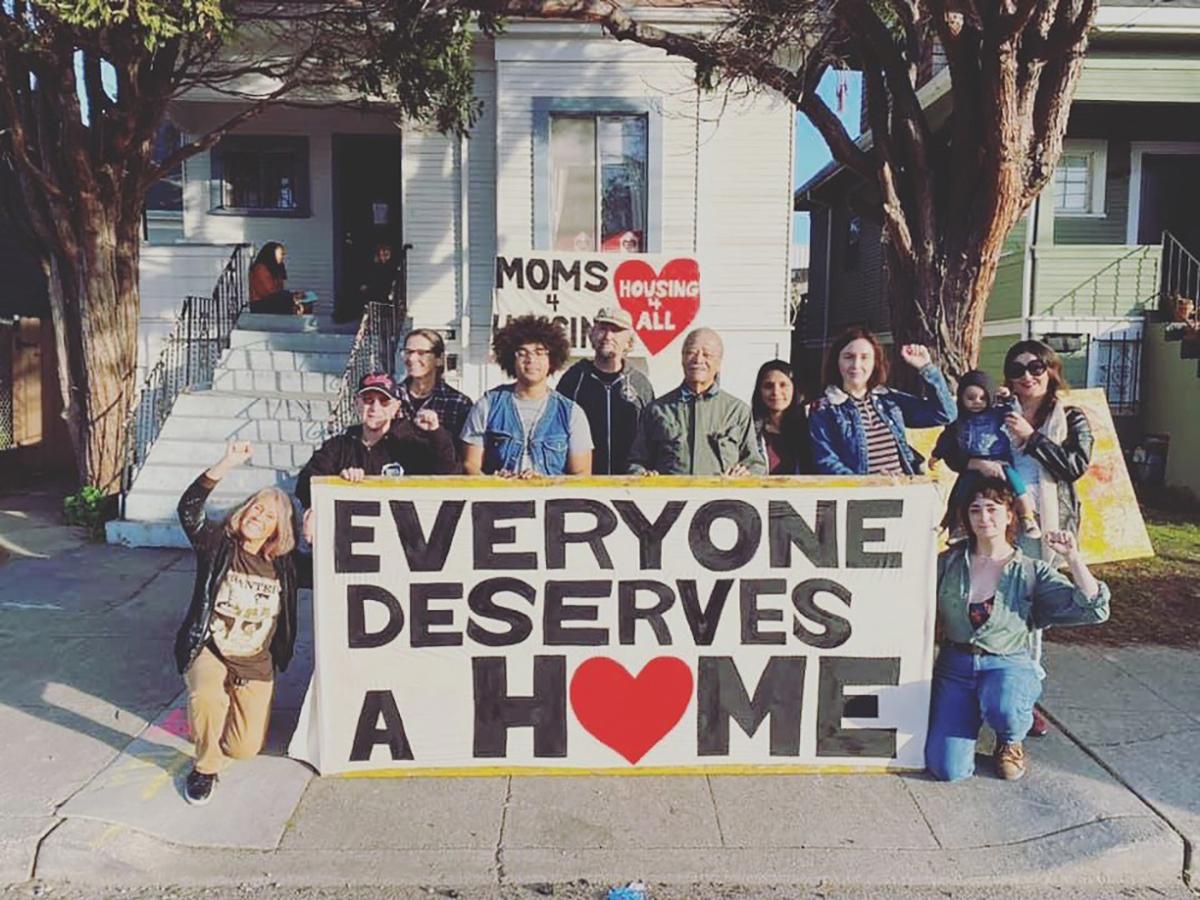
by Claire Herbert, PhD, and Amanda Ricketts, MA, Department of Sociology
Amidst growing economic inequality and rising housing costs in the US, more people are rent-burdened, homeless, or living in over-crowded, substandard, or unstable conditions. This crisis cleaves along pervasive axes of inequality, disproportionately impacting the well-being of women of color and their children, leading to the feminization of homelessness and other housing problems (Bullock et al. 2020; Desmond 2016). Research also highlights the way mothers, and impoverished Black communities, navigate various obstacles to survive and thrive, using informal strategies and networks, or by engaging in what scholars call “activist mothering” (Pittman and Oakley 2018). Our project compares three recent cases of organized housing occupations by mothers in Detroit, Oakland, and Philadelphia. Framed as a mode of contentious politics, we examine the obstacles and possibilities of squatting as a form of direct action to address housing insecurity in the US.
To learn about these cases of squatting, we compiled and analyzed over 75 news articles, city documents, and organizational statements, and reviewed social media posts related to these three cases of organized occupations. We then conducted and transcribed interviews with key activists involved in the Detroit and Philadelphia occupations, and analyzed existing interviews related to the Oakland case. (Note: We were not able to conduct interviews with participants involved with the Moms4Housing case but accessed transcriptions of existing media interviews with key participants.) Framed as instances of “contentious politics” (Tilly and Tarrow 2015), we looked for key features that existing scholarship suggests are important for the impact of contentious political action.
Detroit: Leveraging a City Ordinance for Abandoned Property
Our oldest case, Detroit from 2011–2013, centers on activist-assisted housing takeovers that aimed to leverage a city ordinance to formalize occupants’ property rights. The context of urban decline and the acute impacts of the Great Recession for poor homeowners are influential for this case. Activists moved families—primarily single Black mothers and their children—into abandoned houses that met the definition of “nuisance” according to a local ordinance and petitioned the city to grant the occupants legal title to the properties. These activists tried to leverage an on-the-books-but-not-enforced ordinance that aimed to shift abandoned nuisance properties into the hands of residents who would improve them, occupy them, and in doing so become homeowners.
While Detroit has a history of activism, this case is the most conservative in terms of strategy and goals. They aimed to leverage the law to formalize private property ownership, pushing for entry into the system of homeownership, a property relation foundational for US history, the American Dream, and federal housing policy. Despite this lack of challenge to the status quo, these efforts were ultimately unsuccessful, in large part due to another event that dramatically shaped the future of Detroit: bankruptcy and emergency manager takeover. Some of these mothers lost money they had invested in these homes, while activists surmised that others have continued to live in them without legal right.
Oakland: Targeting Vacant Investor-Owned Property
Continuing the legacy of Black radicalism in Oakland, in 2019 single mothers took over a vacant investor-owned house, demanding title to the property to hold it as affordable housing for longtime residents priced out of the market. Amid the history of redlining and racial segregation in Oakland, current gentrification pressures have made it impossible for many longtime Black residents to access the housing market. These mothers formed a group called Moms4Housing and highly publicized their occupation, court hearing, resistance to eviction, and then eventual arrest and removal from the house. They used this occupation to call attention to the broader intertwined problems of property speculation/vacancy in the context of gentrification.
The efforts of these activists and mothers were marginally successful. Moms4Housing members were evicted from the property, but later secured the right to purchase the property for market rate ($587,500). The house is now held by the Oakland Community Land Trust to be preserved as affordable housing in one of the highest-cost housing markets in the US. Furthermore, the publicity of their actions has had reverberating impacts for local housing policy and for fueling other property takeovers.
Philadelphia: Occupying Housing Authority Property amid the Pandemic
Just prior to the pandemic unfolding in the US, activists in Philadelphia began covertly moving precariously housed mothers and their children into homes left vacant by the Philadelphia Housing Authority. Soon after, when CDC guidance halted homeless sweeps, Center City tent encampment populations swelled to nearly 200, occupying prime urban space. In this case, ongoing local concerns of family separation due to homelessness and of gentrification spreading out from high-cost areas into formerly disinvested neighborhoods came to the fore against the backdrop of BLM protests against police violence and the pandemic. Activists and unhoused residents came together in a happenstance way, leveraging land occupations in Center City to aid these families’ ability to remain in the vacant houses they were occupying.
Rather than prioritize traditional private property ownership as the ideal outcome, activists demanded that the city move the occupied properties into a Community Land Trust to keep the houses as affordable options for low-income residents into the future. These housing and land occupations unfolded unexpectedly but were largely successful as they mutually supported each other’s causes, resisting various forms of state violence and solidifying local community control.
In these US cases, squatting is a strategy to advance housing security for vulnerable residents. However, despite staunch commitments to private property in the US, the outcomes of each case reflect the influence of local context more so than the illegality of activists’ strategies. In paying attention to how activists framed squatting as a response to local problems and an aspect of the solution, property relations come to the fore as a central piece of the housing problem. In US scholarship and policy, housing is overwhelmingly conceptualized as either renting or owning, juxtaposed against homelessness. But in the framing of these cases, activists highlight the property relations that are the problem and suggest property relations that are a potential solution. Scholars and activists concerned with ameliorating widespread housing obstacles should similarly foreground the underlying property relations of different housing models in efforts to mobilize support or schematize alternative possibilities.
— Claire Herbert, PhD, and Amanda Ricketts, MA, Department of Sociology
References
Bullock, Heather E., Harmony A. Reppond, Shirley V. Truong, and Melina R. Singh. 2020. “An Intersectional Analysis of the Feminization of Homelessness and Mothers’ Housing Precarity.” Journal of Social Issues 76(4):835–58.
Desmond, Matthew. 2016. Evicted: Poverty and Profit in the American City. New York: Crown Publishers.
Pittman, La Shawn Da and Deirdre Oakley. 2018. “‘It Was Love in All the Buildings They Tore Down’: How Caregiving Grandmothers Create and Experience a Sense of Community in Chicago Public Housing.” City & Community 17(2):461–84.
Tilly, Charles and Sidney Tarrow. 2015. Contentious Politics. 2nd ed. New York: Oxford University Press.

